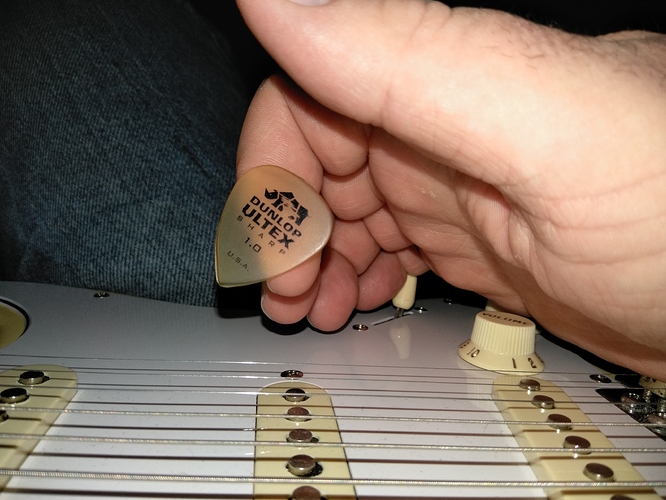Yeah, this a VERY important part of picking mechanics that needs to start being noted in players IMO. Troy is calling it “LEAN” as in a bridge lean… This is something that players use to do 2wps alt picking I think. The trailing side of the pick catches all of the wear in players that use this. The only way I can achieve this “bridge lean” is by holding a slight wrist extension with a 90 degree pick grip. Or, by bridge leaning the pick with my fingers. I’ve never f***** done this in my life. lol. It’s pretty damn uncomfortable.
But it looks like this is how most people are playing, with bridge LEAN? I see it now in Troy, Teemu, Paul Gilbert… and most dominate alternate picking videos shared on here.
I assuming, and observing, that players like Joe Stump, Yngwie, Marshall Harrison, and myself do the polar opposite. It’s a neutral pick point. Leading side of the pick is catching most of the wear. Because when a point direction is needed, it’s a slight neck lean with the fingers.
In my experimentation, with bridge lean bigger aggressive picking movements are easier. Being a machine gun to a metronome click would be easier this way… But all other elements to my playing, expressiveness, nuances, harmonic control, perfect muting… those all suffer. Maybe it’s because it’s ass backwards to how I’ve played for 25 years. From a musical stand point, I don’t think I can switch now, I’m just too used to my way.
Try to speed read this @Troy I tried to keep it short.





